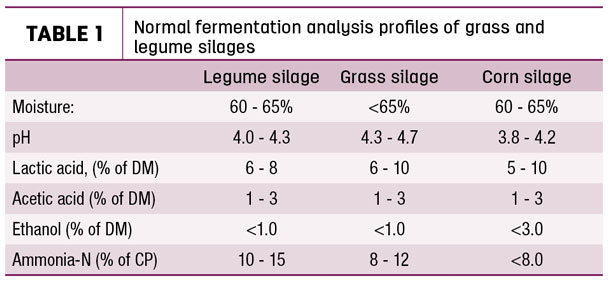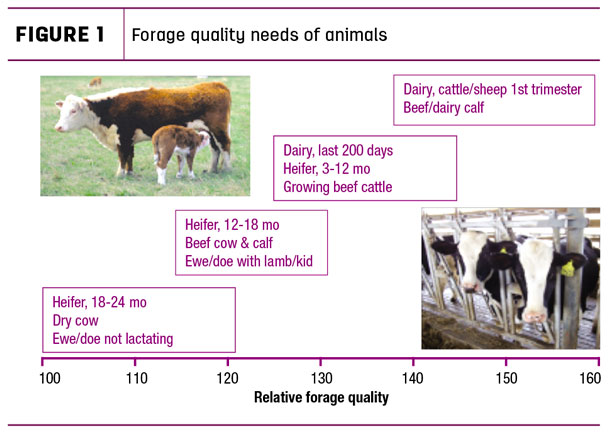Begin by taking a core to analyze forage quality. The sampling can occur anytime after wrapping the bale (heating and fermentation occur over about three weeks after wrapping, but neither affect forage quality unless fermentation is faulty). Take a sample with a bale corer parallel to the ground on the curved side of the bale.
Five samples should be taken from each lot of hay (a hay lot is that harvested from the same field at the same time). It is very likely that baleage from different fields will vary due to factors such as soil fertility, legume content, grass species and other factors. Also, consider that forage quality changes each day (fiber increases, and fiber digestibility and crude protein decrease), so forage harvested several days apart should be sampled and managed separately.
It is important forage be analyzed for crude protein (CP), NDF (neutral detergent fiber) and digestible fiber. Note that TDN (total digestible nutrients) calculated from ADF (acid detergent fiber) is not accurate.
One can also analyze the forage for fermentation, though this may not be important. Baleage made at 50 to 68 percent moisture should ferment well if the bale is packed densely and wrapped well. Good fermentation should lower pH, usually in the 4 to 4.5 range as shown in Table 1, and inhibit mold growth.

This acidity occurs by bacterial production of lactic and acetic acids. Good fermentation should result in lactic acid being 5 percent or more of the dry matter with minimal ethanol production. Some of the CP will be converted to ammonia, with Table 1 showing normal ranges.
Baleage made below 50 percent moisture will have less fermentation and is preserved primarily by being kept in the absence of oxygen. Mold requires oxygen to grow. This is why policing the bags or tubes and repairing tears quickly is so crucial for baleage.
Whether fermented or not, the forage quality will be the same. The only difference is that unfermented baleage will start to mold and heat faster when exposed to air at feeding. However, if forage is consumed in less than one day, losses to heating will be insignificant.
When feeding bales, watch for white mold on the bale surface. This is generally penicillium, which may reduce palatability some but is otherwise generally not harmful. However, the white mold does mean that air was getting into the bale through the plastic. Thus, if white mold is present, either the plastic was poor quality (permeable to air) or an insufficient number of layers were used in wrapping (six or more are recommended).
While considering the plastic, also watch for splits. Good plastic has UV inhibitors to reduce the rate of plastic breakdown. If your baleage plastic is splitting in less than one year, consider a different plastic for next year.
Lastly, use the forage analysis to allocate the baleage to animals that can best use the quality contained therein (Figure 1).

The general desired range is 7 to 9 percent CP needed for pregnant animals, 9.5 to 12.5 percent for lactating beef and growing animals, and 15 to 16 percent for lactating dairy cattle or sheep.
Energy values and intake are generally more important than protein content. You can use the relative forage quality (RFQ) values from the forage analysis to allocate lots of baleage to the category of animals that will benefit most. This is shown in the graph where milking animals generally benefit most from the highest-quality forage. Note that calves also benefit from high-quality forage. Calves that receive high-quality forage when young are healthier, grow faster and perform better as mature animals.
On the other end of the scale, dry cows, ewes and does generally can do well on lower-quality forage. However, reasonable quality levels must be fed, especially over winter for spring calving or lambing. With cattle, we want to maintain a body score of 4 to 5 to have healthy, fast-growing animals. If forage is not of adequate quality, supplement must be fed.
Thus, now is the time to determine the quality of your baleage. Analyze for forage quality; possibly determine fermentation; determine if mold is present (watch continually throughout feeding period); monitor plastic; and, lastly, allocate the baleage to the animals that will benefit most from the quality. ![]()

-
Dan Undersander
- Forage Professor Emeritus
- University of Wisconsin
- Email Dan Undersander










